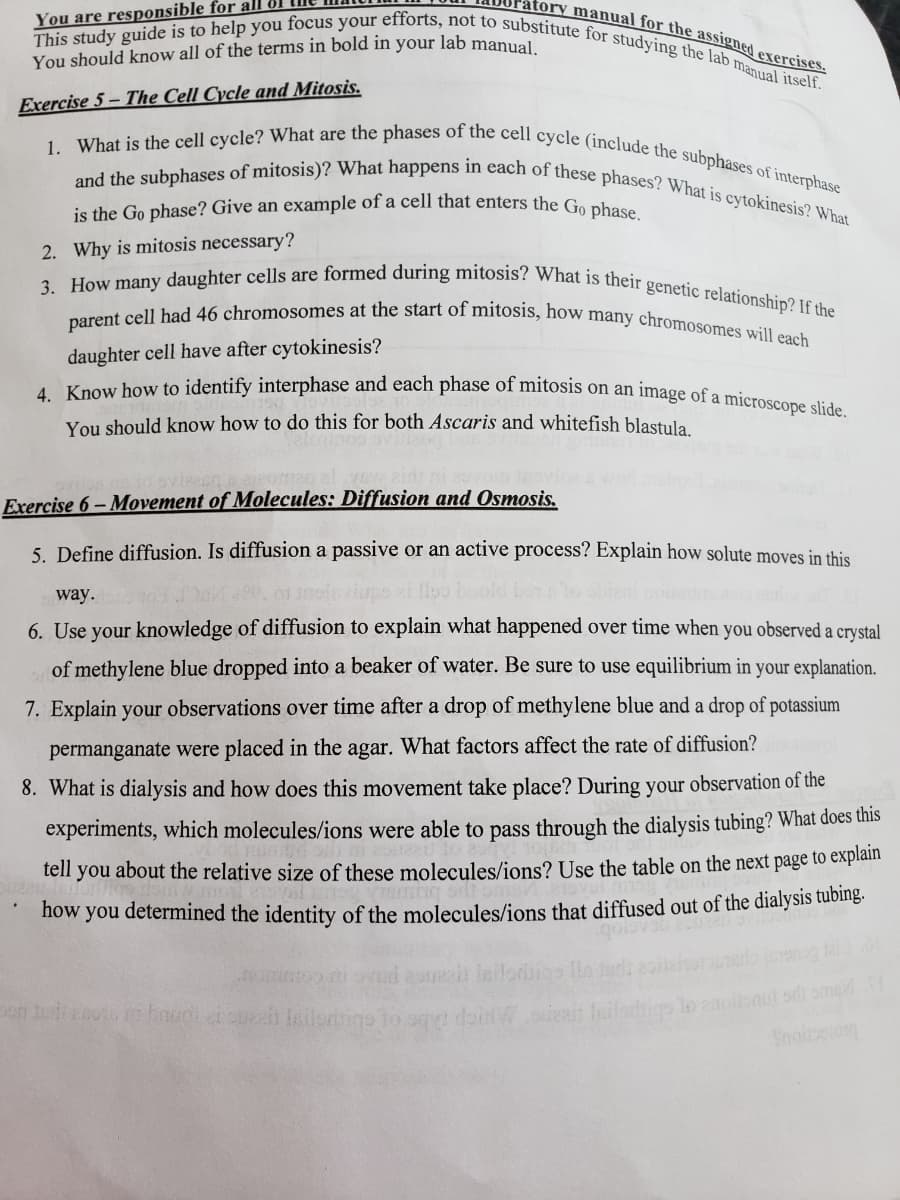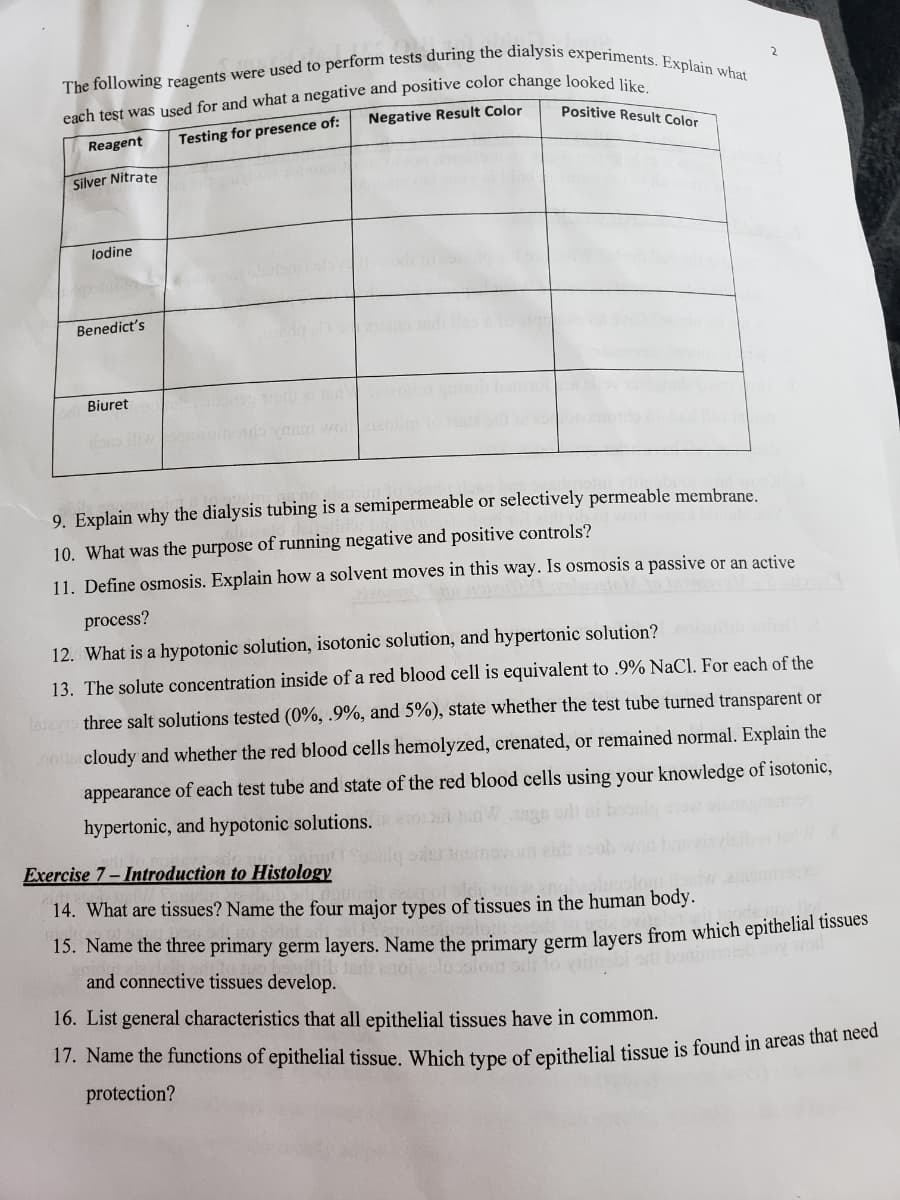This study Or studying the lab manual itself. signed exercises. You should know all of the terms in bold in your lab manual Exercise 5 – The Cell Cycle and Mitosis. 1. What is the cell cycle? What are the phases of the cell cycle (include the subphases of interphase and the subphases of mitosis)? What happens in each of these phases? What is cytokinesis? What is the Go phase? Give an example of a cell that enters the Go phase. 2. Why is mitosis necessary? 3. How many daughter cells are formed during mitosis? What is their genetic relationship? If the parent cell had 46 chromosomes at the start of mitosis, how many chromosomes will each daughter cell have after cytokinesis? 4. Know how to identify interphase and each phase of mitosis on an image of a microscope slide. You should know how to do this for both Ascaris and whitefish blastula rercise 6-Movement of Molecules: Diffusion and Osmosis. 5. Define diffusion. Is diffusion a passive or an active process? Explain how solute moves in this way. 6. Use your knowledge of diffusion to explain what happened over time when you observed a crystal of methylene blue dropped into a beaker of water. Be sure to use equilibrium in your explanation. 7. Explain your observations over time after a drop of methylene blue and a drop of potassium permanganate were placed in the agar. What factors affect the rate of diffusion? 8. What is dialysis and how does this movement take place? During your observation of the experiments, which molecules/ions were able to pass through the dialysis tubing? What does this tell you about the relative size of these molecules/ions? Use the table on the next page to explam how you determined the identity of the molecules/ions that diffused out of the dialysis tubing.
Structure and Composition of Cell Membrane
Despite differences in structure and function, all living cells in multicellular organisms are surrounded by a cell membrane. Just like the outer layer of the skin separates the body from its environment similarly, the cell membrane, also known as 'plasma membrane,' separates the inner content from its exterior environment.
Cell Membrane
The cell membrane is known by different names like plasma membrane or cytoplasmic membrane, or biological membrane. The term "cell membrane" was first introduced by C. Nageli and C. Cramer in the year 1855. Later on, in 1931, the term "plasmalemma" for cell membrane was given by J. Plowe. The cell membrane separates the cell's internal environment from the extracellular space. This separation allows the protection of cells from their environment.
Prokaryotes vs Eukaryotes
The cell is defined as the basic structural and functional unit of life. The cell membrane bounds it. It is capable of independent existence.


Trending now
This is a popular solution!
Step by step
Solved in 5 steps


